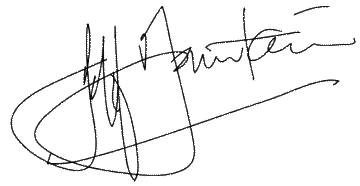The name is derived from Mars, the Roman god of war, yet has been long associated with a popular peace-loving saint born in today’s Hungary but forever associated with the French city of Tours.
Martin was born around 316, very soon after Constantine’s conversion and when Christianity became legal within the Roman Empire. He went with his father, a military tribune, when posted to Italy, and eventually followed in his father’s footsteps to become a soldier himself.
As a young soldier, he too embraced his emperor’s new faith. It was after his regiment was sent to Amiens in Gaul, that an incident occurred giving birth to the celebrated ‘legend of the cloak’. One cold day, Martin encountered a beggar at the city gates. Remembering Jesus’ instruction to share one’s cloak with the naked, he pulled out his sword, sliced his cloak into two, and gave a half to the beggar.
The half he kept himself was preserved as a relic as ‘St Martin’s Cloak’ in the oratory of the Frankish kings. At the time, Martin was attending catechism classes, and shortly after was baptised. On his release from military service at Worms on the Rhine, Martin headed back to Poitiers in Gaul to become a disciple of St. Hilary.
Hermit
In his mid-thirties, around 361, Martin began to live the solitary life of a hermit in a deserted region (now called Ligugé). A number of monks gathered around him, eventually forming the core of a monastic community from which later developed the celebrated Benedictine Abbey of Ligugé.
While Martin lived for a decade in relative solitude, his military background helped him see the strategic potential of such a community for supporting evangelistic outreach. He himself set out to evangelise the pagan inhabitants of central and western Gaul. Many legends survive about the saint’s exploits, roughly tracing his itinerary.
On the death of the bishop of Tours, around 372, many wanted the now-famous hermit of Ligugé to succeed him. To persuade the reluctant Martin, the city’s clergy lured him to Tours by begging him to come quickly to pray for a dying woman. On his entry into the city, a crowd prevailed upon him to become Bishop of the Church of Tours.
While Martin acquiesced to their request, he continued to live in a cell outside the city as he carried out his new duties with simplicity and evangelistic fervour. Once more he was soon joined by other hermits, and another monastic community emerged, which still exists today Marmoutier (Majus Monasterium).
Martin died in his eighties around 397 and became one of France’s most revered saints. Many miracles were attributed to his intercession, both before and after his death. A popular cult around him developed through the Middle Ages, with literally hundreds of churches and chapels dedicated in his name, and many towns and villages throughout Gaul also named after him.
Emblem
French soldiers posted in the Roman garrison in what became Utrecht revered him as their patron saint, and built a chapel in his name. Two centuries after Martin’s death, when the Anglo-Saxon missionary Willibrord arrived in that junction of two rivers, he built a new chapel on the ruins of the old. He dedicated it to Martin. Thus from its very foundation, Martin has been the city’s patron saint.
Today the emblem of the City of Utrecht is a red and white square divided diagonally from corner to corner, representing Martin’s cloak cut in two. It remains at the heart of the University of Utrecht’s symbol. All around the city this symbol is to be seen on city buildings and signs, flying as pennants and flags as a silent reminder of Christ’s command to share with the poor.
Martin’s memory lives on all across Europe and around the world, largely unconsciously, in the names of innumerable churches, places and people.
Till next week,
Till next week,
